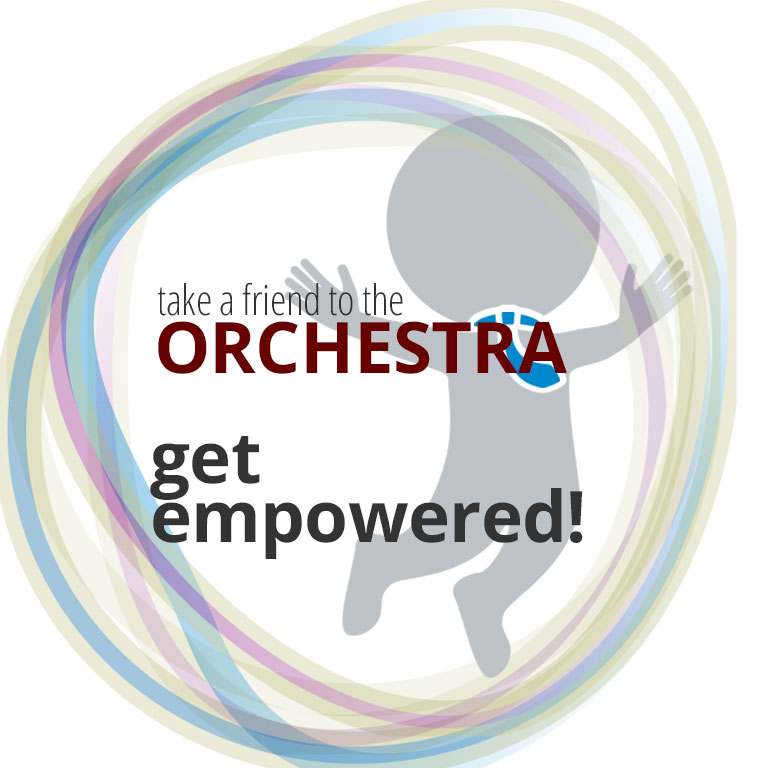Capitalizing on the value of using personal experiences to connect with a reader, Leonard Slatkin has created a wonderful TAFTO contribution that draws on numerous events throughout his notable career – even one from when he was purportedly “just hanging around waiting for my first opportunity to conduct.”
All in all, his contribution is an uplifting and enjoyable piece that provides tangible examples about the value, and infectiousness, of making personal connections through classical music…
Take a Friend to the Orchestra
By: Leonard Slatkin
Among the most satisfying experiences I have had, the introduction of great music to non-musicians has been a source of pride. Sometimes this has happened by accident and sometimes it has been on purpose. Let me cite three examples.
In 1968 when I began my long association with the St. Louis Symphony, the orchestra went on strike. With nothing to do I found myself teaching in schools and just hanging around waiting for my first opportunity to conduct. In those days there was no National Public Radio, but some cities had what was referred to as “underground radio”. In St. Louis the station’s call letters were KDNA, and it was located in an abandoned house in an area called Gaslight Square. The personnel for this station lived in the house. The station came on the air when someone woke up and turned on the transmitter.
The morning’s program was hosted by one Francis Reuterman, but we all just called him Fritz. He did not have any musical background, but he loved listening to classical music. It was my job to organize the recording library and advise Fritz as to what was appropriate for a morning presentation. You could hear the joy in his voice as he encountered the great masterworks for the first time. One morning he put on a recording of the 7th Symphony of Beethoven. His excitement was so great that he decided to play it again. And again. And again. And again. We heard the piece for the next four hours, but wasn’t it wonderful. I could only wish that I could hear this piece again for the very first time.
Several years ago at the National Symphony Orchestra, we started a project called Composer Portrait. Essentially, the idea was to have a program divided into three parts. A biography of a given composer is narrated, along with the music that chronologically follows the path of that composer’s life. We have been very fortunate to have Martin Goldsmith narrate these wonderful stories. After intermission, I spend about ten minutes focusing on one work by the featured composer followed by a complete performance. After a brief pause the audience is invited to stick around and ask the performers about aspects of the composer or the performance itself.
The very first year we did this, a young woman raised her hand and I called on her. She said that this was the first concert she and her then fiancé had ever attended. They found the experience both moving and entertaining. This was exactly the kind of audience we were hoping to attract. The next season during a subscription concert, we also had a chat with the audience post-performance. A young woman raised her hand and introduced us to her now husband and reminded us of our first meeting during the Composer Portrait concert. She said that the experience of that concert was something they would always cherish, and indeed they had made coming to the symphony a part of their lives.
This past February I had the pleasure of taking the Royal Philharmonic of London on a trip to Egypt, during which we performed concerts in Cairo and Alexandria. During the time in the Capitol, I was asked to do a rehearsal with the Cairo Symphony. I did not even know there was one. The spirit and enthusiasm of these musicians was infectious, but more interesting was that a few students who were not musicians had been invited to attend the session. One of them spoke to me when we had concluded. He said that had no formal musical training and was skeptical about works from the Western canon, but after he heard and saw people from his own country embracing the music of Dvorak, Mozart and Brahms, he knew that his life had been forever altered.
These are just three examples of the ways in which music can reach disparate members of any given society. When I think back to the ways in which music can touch people’s lives, I am reminded that although we aspire to touch those who have music in their lives, it is more valuable to touch those without. On many occasions I have taken a friend to the Orchestra, but I am especially delighted when the Orchestra becomes a friend.



The most interesting aspect of these three stories, to me, is how they are all about “outreach” that is inspirational rather than instructional — it inspires excitement about and love for the music rather than simply trying to persuade people that the music is “important” and that they need to be “educated.” Too much outreach is about describing what the audience is supposed to be hearing and listening for, implying that if the audience doesn’t love the music it’s because they aren’t listening correctly.
Something like the “Composer Portrait” (if I’m understanding it right) engages the audience with the historical and biographical and trusts that their listening doesn’t need crutches.
This matches how we are accustomed to approaching most of the rest of our culture. Popular music fans dig deeply into the biographies of their favorite musicians, but don’t need to have the technical elements of the latest songs explained to them. (And it’s not because the songs are too simple to bear such analysis — they aren’t.) We watch History channel programs on World War II, and those programs may include a small dose of tactical analysis to support the narrative, but we don’t watch the Military Strategy and Tactics channel. And so on.
Anyway, I hadn’t thought about the value of that strategy in these terms before — thanks for providing the catalyst.
Reading Maestro Slatkin’s first story reminded me of one of my own experiences. Just like Fritz in his story, I have no musical background but have just fallen in love with classical music.
Several years ago I heard Brahms’ 2nd Piano Concerto for the first time, played by the Pittsburgh Symphony Orchestra with Emmanuel Ax. I was so blown over by the music, I came back the next night for the second of the 2 weekend performances.
I have since heard it numerous times (both live and in concert) but am always reminded of that first, angelic performance. Thanks for helping me re-live that one more time.
Great stuff
Frank